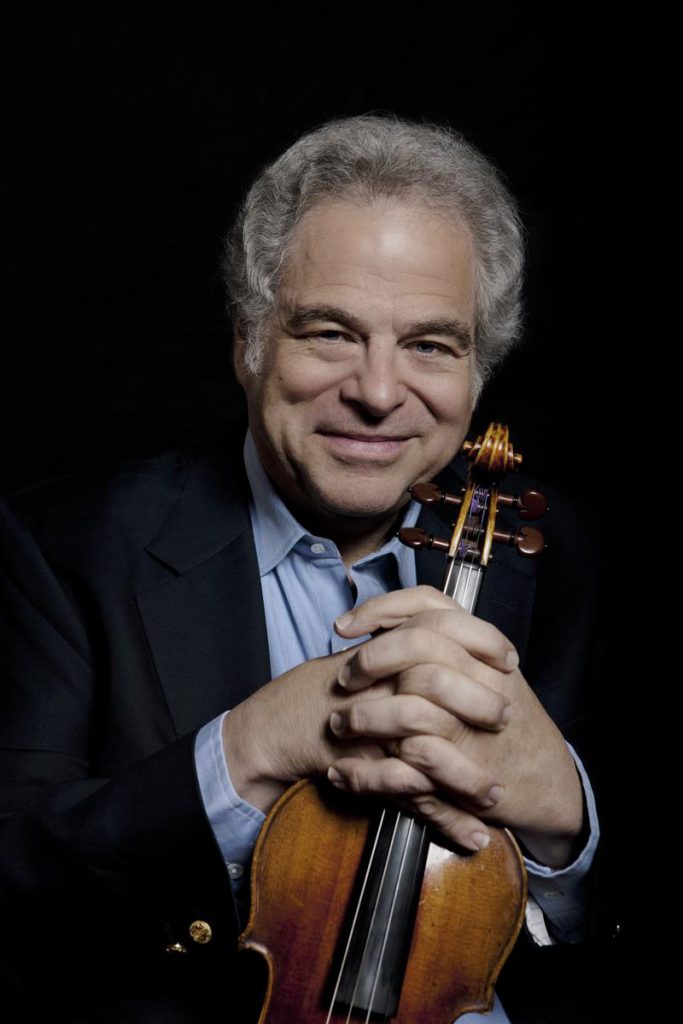Ceremony, dark drama, and Perlman warmth with the Israel Philharmonic

Itzhak Perlman performed with the Israel Philharmonic Orchestra Sunday afternoon at Carnegie Hall.
Sunday afternoon’s appearance by the Israel Philharmonic Orchestra was more than a simple concert. Presented in a benefit concert by the American Friends of the IPO, the affair had a substantial social element, with the orchestra in general and violin soloist Itzhak Perlman in particular playing at least half the program for, and in the presence of, what amounted to several thousand extended friends and family.
Yoel Levi conducted, in place of long-term IPO music director Zubin Mehta. The first few minutes were devoted to the ceremonial introduction of “The Star Spangled Banner” and “Hatikvah,” the lyrical and lovely Israeli national anthem.
The form of the main program followed the generic model of overture-concerto-intermission-symphony, but the musical selections made for a fitfully awkward, though not unpleasant configuration.
First up for the main concert was Concertino for Strings, written by Ödön Pártos, an Hungarian emigre who was the IPO’s principal violinist from 1938 to 1956. The Concertino is an expanded version of the composer’s highly regarded String Quartet No. 1, and was commissioned and premiered by the great Hungarian conductor Ferenc Fricsay.
What Fricsay and others heard in the quartet was made clear Sunday. This is a strong and skillful piece, flavored by Bartók, but with the rich, acrylic modernist tonality commonly found in mid-20th century American composers like William Schuman.
The IPO strings and the musical idiom were an excellent fit, the dark tonal quality of the orchestra bringing out the atmosphere and a touch of the Bartókian in the music. The Concertino has a compelling through line, straightaways and twists and turns that are all part of a determined direction. This was a meaty way to start things.
Right after, though, the tone turned toward the congenial, in no small part due to Perlman’s presence. Playing Beethoven’s Romances Nos. 1 and 2 for Violin and Orchestra, his simple, sweet tone made an excellent contrast with the sound of the orchestra, so much so that despite playing at a low dynamic level, he projected with ease.
So much of that was Perlman’s musical warmth and personal charm, a humanism that makes a worthy companion to Beethoven. The Violin Romances are spare, elegant pieces, yet still with Beethovenian strength and dignity at their core. Perlman played with long, song-like lines, using rubato across the phrase lengths, which had an improvisational effect.
That opened what amounted to an extended set from Perlman and the IPO. John Williams’ banal yet inescapable “Theme from Schindler’s List” sat awkwardly in between Kreisler’s Liebeslied and Liebesfreud, a dreary and predictable interlude between Perlman’s shining performances of Kreisler’s entertaining miniatures. The Williams perennial was shown up by the encore, Carlos Gardel’s Tango (por una Cabeza).
After intermission, Tchaikovsky’s “Pathétique” Symphony No. 6 returned the event to a more formal concert feeling. The dusky sound of the IPO proved an ideal vehicle for this music under the direction of Levi (who conducted from memory throughout the afternoon). The first movement was enticingly languid to begin, then furious during the extreme sturm und drang of the development. But the orchestra felt oddly flat at the recapitulation.
Yet Tchaikovsky’s marvelous waltz in 5/4 time was full of feeling. The audience applauded after each of the first two movements, which made their ovation after the scintillating triumphant march even more understandable than usual.
While that is often an unwelcome interruption during performances of this symphony, the sense of pleasure and the pause led to a piquant emotional contrast in the plangent final movement, its turmoil and resignation clearly having an effect on the orchestra’s audience.
This sense of communal feeling was furthered and deepened by the first encore, a deep and ravishing reading of “Nimrod,” from Elgar’s Enigma Variations.